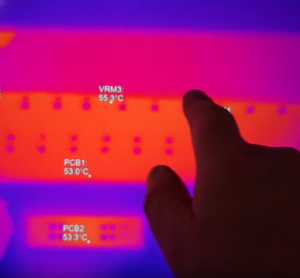 Who doesn't remember my article "TIM Gate, VRM disaster or just too much polemic? Skylake-X and possible flaws in X299 motherboards"? Then, as now, however, it is precisely this circumstance that is a constant first-rate burner. However, it must also be borne in mind that Intel defines a short-term peak of 296 watts for its current CPUs on the 2066 socket, which must not be exceeded. Overclocking back and forth, specifications are there to accept them.
Who doesn't remember my article "TIM Gate, VRM disaster or just too much polemic? Skylake-X and possible flaws in X299 motherboards"? Then, as now, however, it is precisely this circumstance that is a constant first-rate burner. However, it must also be borne in mind that Intel defines a short-term peak of 296 watts for its current CPUs on the 2066 socket, which must not be exceeded. Overclocking back and forth, specifications are there to accept them.
This is precisely why I bowed to the preset of the motherboard, which in the end did not release more than the 300 watts without further intervention, even if I supposedly overridden the limitations in the BIOS, which in addition only over a limited period of time. is possible. I find this restriction almost ingenious, because it does not detract from the normal performance. And if AVX is a power virus in Prime95, in the real-world application scenario, these nearly 300 watts are almost 300 watts barely or never reachable. Not even with the Core i9-7980XE.
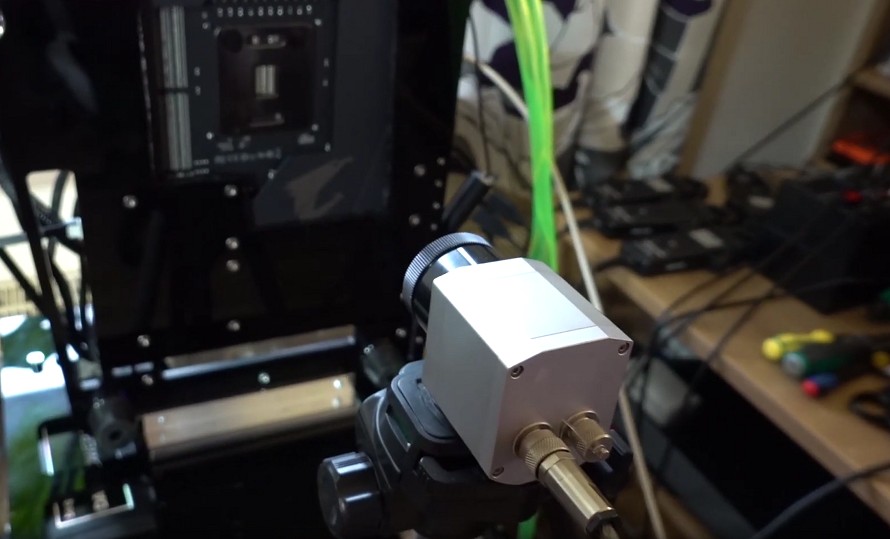
The thermal monitoring and evaluation is well thought out, because I use a specially modified benchtable with 90° hinge for better inspection and monitoring of the motherboard back in the voltage converter range. As always, the measurement is done with a high-resolution PI640 from Optris, which provides crisp images and radiometric videos with the normal optics, which even some manufacturers thankfully resort to.
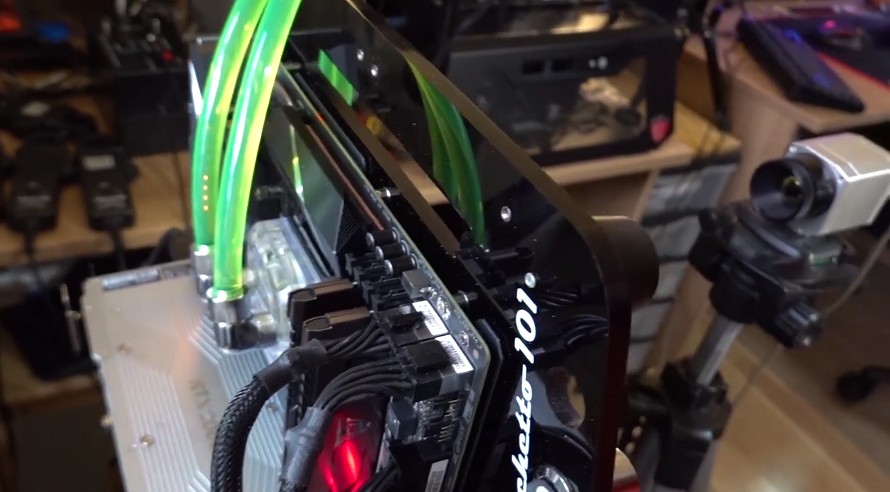
So prepared, I can first devote myself to the essential question of whether the motherboard is able to perform the tasks of a well-used workstation at all.
Voltage converter cooling with heatpipe and backplate
Aorus installs a real 6 mm heatpipe made of nickel-plated copper composite material and no hollow blender made of nickel-plated copper pipe. Unfortunately, there is such a thing. Directly above the 12 voltage converters of the doubled 5+1 phases (12 control circuits) the heatpipe lies flattened and carries the lamella heat sink, which is also mounted on the coils by means of a thermal pad. Well thought out and looked at the graphics cards, I would mean.
The heatpipe ends in a second lamella cooler, which sits behind the disguised I/O-Shield and is additionally blown with fresh air by a small, externally invisible 4 cm fan below the shroud. You hardly hear it and it is a clever solution especially for water-cooled systems without further draught in this area. The IR image after 30 minutes with almost 300 watts of power dissipation on the CPU shows an interesting temperature picture.
While PCB #1 roughly equals the voltage converter temperature, the cooling fins of the main cooler have a delta of just 7 degrees to the VRM at just 7°C, which is really good. The heatpipe is also approx. 72 °C hot and the second cooler with the Blasius in the Shroud is approx. 70 °C. The delta of only 11 degrees is really excellent and also shows that the removal of the waste heat is really optimal. It is hard to solve it better.
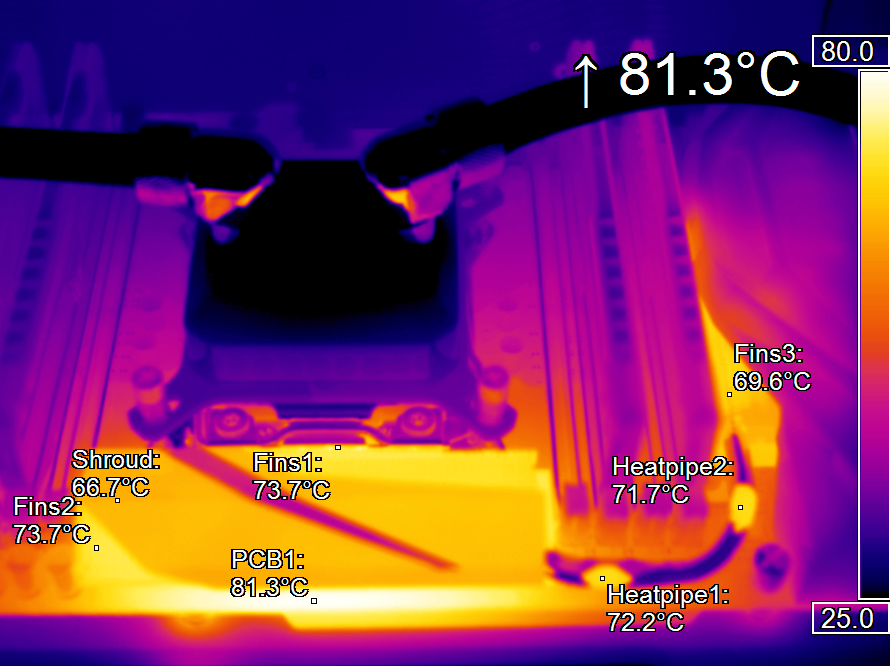
The motherboard also relies on a stable and circumferential aluminium backplate on the back, which not only serves to stabilize, but has also been actively integrated into the cooling concept of the voltage converters.
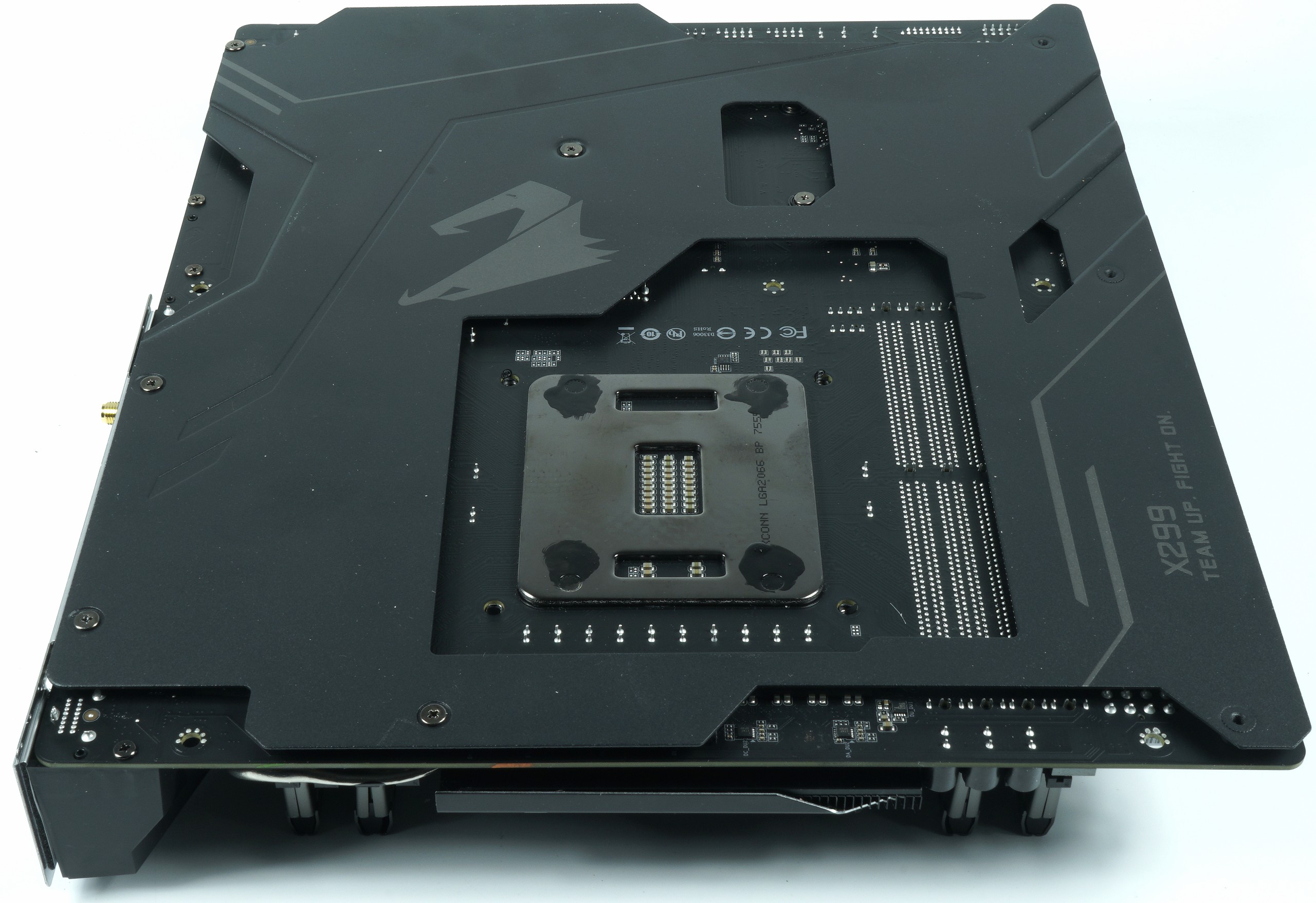
The area of the board below the voltage converters is also thermally connected to the backplate by means of a very good thermal conductivity pad, which also works really well in practice.
The up to 80 °C on the hottest spot of the board back then also match the plentiful 81 °C of the top with the VRM. This is not something that cries out for help, because one thing must also be borne in mind: the open construction is even counterproductive here, because I do not produce a supportive airflow, as it can be found in good housings. For this build-up situation and the not optimal circumstances, the measured value is really good.
For the entire test of the cooling I also shot a very detailed video, which shows not only the test object, but also my work. I can only recommend everyone to take a look at this in full:
Intermediate conclusion
The board has a very good cooling system with sufficient reserves and never has even the smallest chance to get to the areas of a thermal throttling even in some way. There is still more than 20 degrees of air up and you can report in good conscience that the manufacturer has solved the homework well. Bees in the mom or dad booklet, put, one.















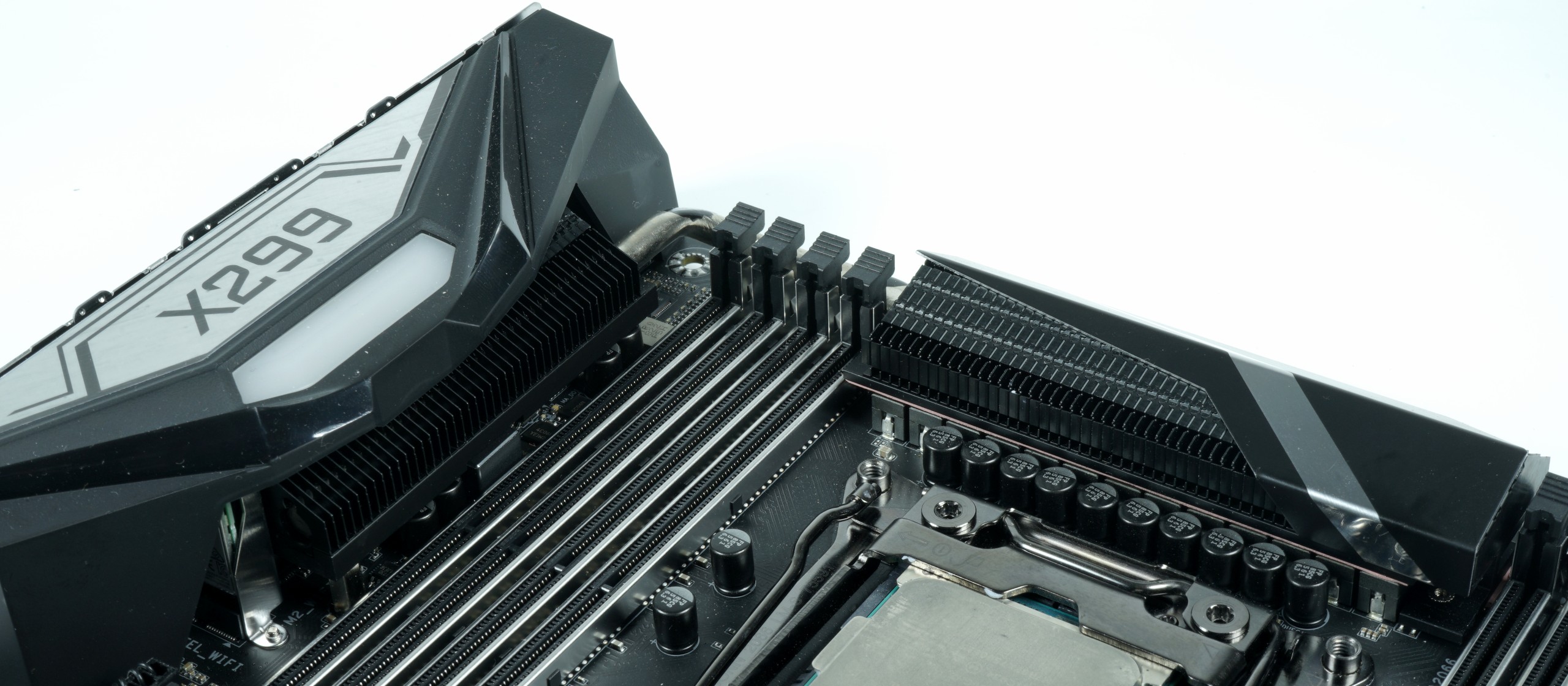




















Kommentieren